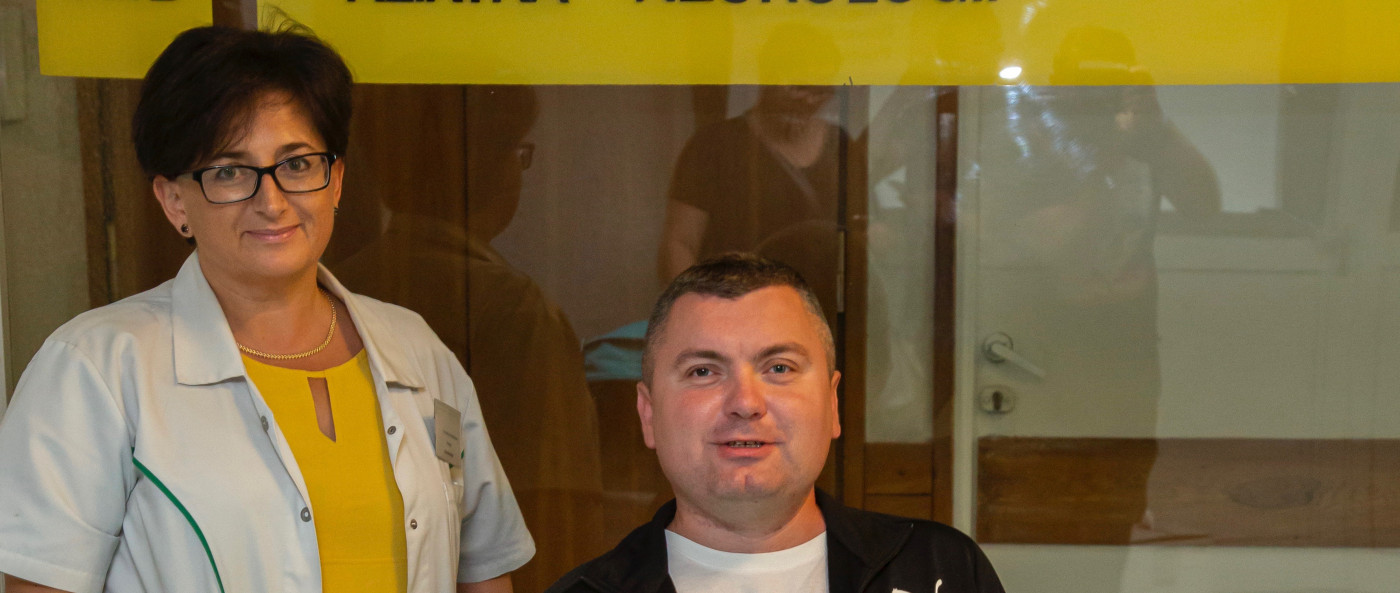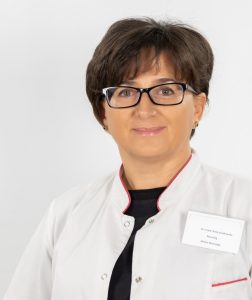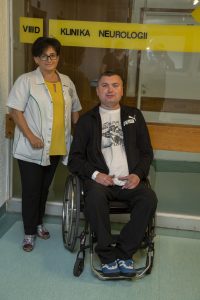Nearly Half of Poland’s SMA Patients on Track to Get Spinraza, Experts Say
Written by |

Poland is rolling out Biogen’s spinal muscular atrophy (SMA) therapy Spinraza (nusinersen) at a faster pace than any country that has approved it, Polish experts say.
Since the first injection in May 2019, about 400 of the 830 patients in Poland’s SMA registry have either started taking Spinraza or been put on a waiting list to obtain it, according to Kacper Rucinski, president of Warsaw-based Fundacja SMA. A commission of top neurologists is steadily adding patients to the list after determining that they qualify for National Health Service coverage of the treatment.
Longtime SMA expert Anna Lusakowska, a doctor at the Warsaw Medical University Neurology Clinic, predicted that Polish patients who want Spinraza will eventually get the medicine.
However, not all 830 will opt for it, said Rucinski, who along with Lusakowska spoke with SMA News Today by phone. Some patients with the muscle-wasting disease are receiving Roche‘s risdiplam or Novartis‘ branaplam in clinical trials. They would likely stay with their current treatments once those two medications are approved by the Health Ministry and covered by the national health insurance program.
Spinraza is very expensive; both risdiplam and branaplam also will be, upon approval. The U.S. retail price of Spinraza is $750,000 for the first year and $375,000 in subsequent years, although Poland, like all members of the European Union, negotiated its own price with Biogen.
Spinraza first became available in 2017 to a few dozen Polish patients under Biogen’s expanded-access program. In December 2018 — 18 months after Spinraza received European Union approval — Poland authorized its National Health Service to pay for it.
Hospitals in three of Poland’s 16 regions spearheaded Spinraza treatment in 2017. Lusakowska’s hospital, in the Masovia region — which includes Warsaw — joined them last year.
“Not only did most of the regions outside Warsaw have no experience with Spinraza; they had never even treated SMA patients before,” said Lusakowska, who started Poland’s SMA registry in 2010.
About 120 of Poland’s SMA patients live in the Warsaw area. As a result, the neurology programs at Warsaw Medical University and Children’s Memorial Health Institute in Warsaw became leaders in treating the disease decades ago.
Sharing the expertise
After the national health insurance program began covering Spinraza, Lusakowska’s neurology department decided to administer the medicine to as many people with SMA as possible. That’s led to long hours for staffers, but also has allowed Lusakowska’s team to develop a level of expertise solid enough to share with inexperienced practitioners in other regions.
Patients with severe curvature of the spine are a special challenge, even if they have had previous surgery to correct their scoliosis, she said. Radiologists at Lusakowska’s clinic use a computerized tomography (CT) scanner to administer injections to individuals with badly curved spines. The scanner shows the best locations for injecting those with scoliosis.
Four months after Poland’s first non-early-access injection, all regions are offering Spinraza, although it hasn’t been easy, Lusakowska said. The surge in Spinraza patients since May has overwhelmed neurological clinics, which — in addition to SMA — deal with strokes, epilepsy and many other nerve-related conditions.
Lusakowska began her neurology career as an SMA specialist in the mid-1990s, just as scientists were discovering the cause of SMA — defects in the SMN1 gene. She and other SMA specialists hoped researchers would develop a therapy quickly.
“I worked with SMA patients for 30 years before a treatment came,” Lusakowska said. “It’s really wonderful that I can finally do something for them.”
The first Spinraza injection is emotional for patient, family and doctor alike, she said.
“Usually the patient cries, the mother cries — they have been waiting such a long time for this,” she said.
Lusakowska said she can deal with the expressions of joy, even if they include tears. It’s harder when the emotion is the anguish of “patients calling to complain that they have had to wait such a long time for Spinraza but are still not receiving it,” she said.
Spinraza has ‘amazing’ results
Like most countries, Poland prioritizes Spinraza’s roll-out by age and disease severity. Children younger than 3 years old with SMA type 1 — the worst form of the disease — get top priority because research has shown they can benefit the most.
Adults with advanced stages of SMA are believed to gain less from treatment, though the main focus of Lusakowska’s clinic is adults. She and her colleagues are administering Spinraza to 35 people in their 20s and older with different types of SMA, and expect to treat 70 eventually.
The 35 include seven type 1 patients. Six began taking Spinraza in Belgium under the expanded-access program, but returned to Poland after the National Health Service agreed to cover the treatment costs. The clinic also treats several children above the age of 3.
Lusakowska said Spinraza benefits all her SMA patients. Some improvements are obvious to doctors, while others are not — but patients say it is helping them. Within a year, her clinic will have enough month-to-month, muscle-strength comparison data for a scientific assessment of Spinraza’s effectiveness.
Some improvements have been amazing, Lusakowska said. That is the case, for example, with a 4-year-old Polish girl with SMA type 2 who began taking Spinraza in France when she was a few months old. Doctors had diagnosed her SMA in the womb after her older brother developed type 2. He also receives Spinraza.
“Her brother is improving all the time with Spinraza,” Lusakowska said. “He is not walking, but he is much stronger. But his sister, who began receiving Spinraza when she was 3 months old, is walking, jumping, dancing — she’s a normal girl.”
Another heartening sign is that, thanks to Spinraza, some patients who had been on detachable ventilation devices 16 hours a day have been able to reduce that to 10 hours a day.
Similarly, “some patients say their voices are becoming much stronger” as Spinraza strengthens their larynx muscles, Lusakowska said.
She praised the Health Ministry for deciding to cover all SMA patients who want Spinraza, rather than restricting it only to those in certain categories.
“We don’t have to turn anyone away,” she said. “We can tell all our patients that maybe not this month, but next month, we can treat you.”








